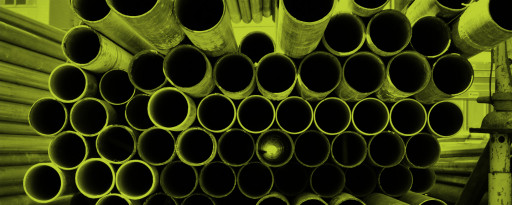Reducing noise transmission
Codewords 79: July 2017
With higher density housing becoming more widespread, designers and builders need to be up to speed with how wall assemblies can limit airborne and impact sound transmission between joined buildings.

As New Zealand’s population grows, our district plans and long-term planning rules change to ensure we build enough homes for our residents. In many areas of the country, these changes have resulted in a move away from the traditional stand-alone dwelling to higher density residential construction such as townhouses, terraced housing or apartments.
Noise insulation in a building
Sound insulation is a building element’s ability to reduce the sound that goes through it. It is generally given in a single unit number as a guide to its effectiveness at limiting sound transmission, for example Sound Transmission Class (STC) 55 and Impact Insulation Class (IIC) 55.
This single unit number is a summary of the element’s sound insulation performance over a range of frequencies. It’s important to note the single unit doesn’t give you a full picture at all frequencies.
For example, an STC 55 timber wall won’t have exactly the same performance at all frequencies as a STC 55 concrete wall.
Types of sound insulation
There are generally two types of sound transmission to consider for buildings:
- airborne sound – noise originating in air, for example voices, music, motor traffic and wind.
- impact sound – noise originating directly on a structure by blows or vibration, for example footsteps above, furniture being moved, drilling and hammering the structure.
For wall assemblies, sound insulation should be thought of in two ways:
- external sound insulation – limiting noise from outside the building. This is generally provided by the building envelope.
- internal sound insulation – limiting sound transmission within the building, for example, inter-tenancy sound insulation or plumbing sound insulation.
The minimum requirements for preventing sound transmission through building elements are given in New Zealand Building Code Clause G6 Airborne and impact sound. Remember that if you undertake building work, it must comply with the Building Code regardless of whether it requires a building consent. You cannot interchange building products that form part of a building system unless you have followed a formal variation or amendment process.
Wall assembly and sound insulation
As a general rule, reducing sound transmission requires more mass or a separation of elements. Mass can be increased by using a thicker version of the same material or by using a denser material.
A range of factors need to be considered when selecting, installing or detailing noise control in wall, floor and ceiling assemblies (see Table 1). Always keep to the design specification for building elements that contribute to the sound insulation, particularly for inter-tenancy walls.
Building Code Clause G6 Airborne and impact sound(external link) has further information.
Table 1: Wall assembly construction to reduce sound transmission
| Wall assembly | Sound transmission to consider | What to consider | |
|---|---|---|---|
| Bridging inter-tenancy walls | Airborne noise | Internal sound insulation | Sound transmission by bridging occurs when a solid object connects two objects that otherwise would not have touched, for example in double stud or staggered stud wall constructions. This often occurs for intertenancy walls at the facade or at junction details, reducing the sound insulation of the inter-tenancy wall. Solution: Prevent bridging by removing the bridging element or using a vibration isolation layer like rubber or a flexible sealant around the bridging element. The exact solution depends on the project. |
| Windows and openings | Airborne noise | External sound insulation |
Windows and openings are weak points for sound insulation. Generally, windows with thicker glazing and bigger air gaps between panes have better sound insulation. Solution: Double glazing is slightly better than single glazing for sound insulation. However, it is not always better for low frequency noise such as planes and some traffic. If low frequency noise sources are expected, get advice from an expert. |
| Studs at 400 mm centres | Airborne noise | External sound insulation |
Studs at 400 mm centres make linings too rigid at certain frequencies, reducing sound insulation performance. Solution: If sound insulation performance is a priority, avoid installing or detailing studs at 400 mm centres as there is no cost-effective solution to insulate the sound in this situation. |
| Lack of 'fluff' | Airborne noise | Internal and external sound insulation |
Fluff helps to absorb noise. Fluff is typically wool, fibreglass or polyester insulation installed in wall or roof cavities or between floors. A meaningful increase in the sound insulation of a building element typically needs a minimum density of fluff of 9.8 kg/m³. Generally, R1.8 thermal insulation will do the job. Solution: There is little benefit from greater density fluff, although increasing the R-value will improve thermal performance. Adding internal linings to walls, ceiling or both, is more effective. Cladding systems with polystyrene and sandwich panels have limited sound insulation performance. The best solution is to add mass to the construction. |
| Sarking | Airborne noise | External sound insulation |
Sarking improves sound insulation. Solution: If you value sound insulation and your building has sarking in the walls, roof or ceilings, try to keep it. However, be wary of potential bridging. |
| Gaps | Airborne noise | External and internal sound insulation |
If a torch can be shone through a gap then noise will travel through it. Solution: When sound insulation is a priority, try to avoid gaps. |
| Glues and sealants | Impact and airborne noise |
External and internal sound insulation |
Glues and sealants for sound insulating elements often need to remain flexible throughout their life to prevent noise transmission. Solution: Stick with what has been specified and check if you have concerns. Changing glues or sealants to a non-flexible option or one that hardens over time can significantly reduce overall sound insulation performance. |
| Penetrations | Airborne noise | Internal and external sound insulation |
Penetrations are made by items such as fire collars, fans and socket outlets and can bridge inter-tenancy constructions or provide holes in the wall assembly. Solution: Stagger socket outlets on either side of studs to prevent a weak point in sound insulation. Avoid having a socket on both sides of the wall in one cavity space, for example. For better overall sound insulation performance, install fire collars and fans above ceilings that already have improved sound insulation. Fan ducting can also be sound insulating. |
Please note building consent requirements and warranties may be affected where a system has been modified.
Quiz
1. Which of the following statements is true?
- All noise control work must have a building consent.
- The performance requirements for sound insulation are set out in Clause G6 of the Building Code.
- All building work must have a building consent and comply with the Building Code.
2. For sound insulation, which are typically weak elements in an external wall assembly?
- A window or door opening.
- A hot-point/light switch/power socket.
- A fire collar.
- All of the above.
3. Can you interchange building products specified as part of a wall assembly system?
- Yes, there are no real issues.
- Sometimes, but it depends if it is an external or internal wall. It is not recommended, but the product must meet the Building Code to the same extent as the substituted product in all respects.
- No, changing any part of a building system is not permitted.
Check answers
1. Which of the following statements is true?
b. The performance requirements for sound insulation are set out in Clause G6 of the Building Code.
2. For sound insulation, which are typically weak elements in an external wall assembly?
a. A window or door opening.
3. Can you interchange building products specified as part of a wall assembly system?
c. No, changing any part of a building system is not permitted.
